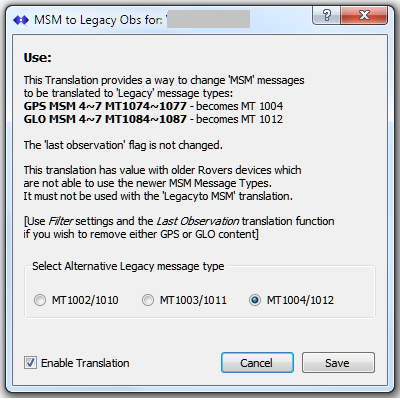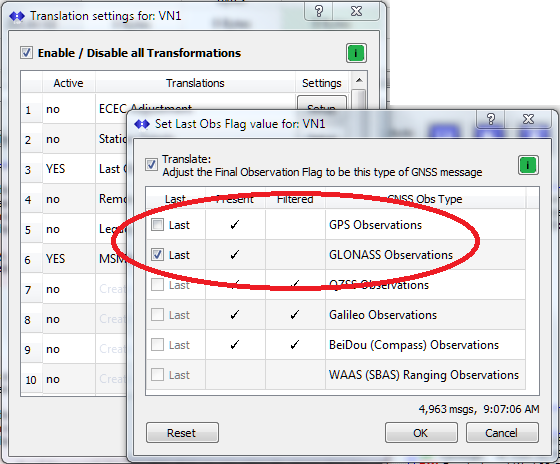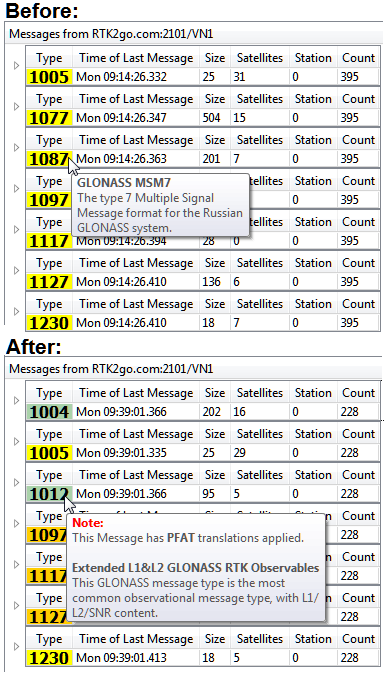The MSM to Legacy translation is used to translate newer MSM style messages (msm = multiple signals messages) to old Legacy style messages. This has value to network operators whose rover communities (NTRIP Clients) contain older devices that cannot process the newer MSM message types. Caster streams can be developed that cater to the needs of these devices. RTCM SC-104 recommends that MSM and Legacy observations should not be combined in the same stream, and it is wasteful of wireless bandwidth.
In more detail: messages MT1073~1077 (for GPS) and MT1084~1087 (for GLO) are converted to the equivalent message types selected during setup. That is, messages MT1002~1004 (GPS) and MT1009~1012 (GLO). And this process can also be used to remove L2 content when desired. Only GPS and GLO GNSS types are supported, as the other GNSS types do not have legacy equivalents. In general, other the MSM message content would be filtered out (using a PFAT Filter) from in a stream developed to support only older rover devices.
Use
This translation consists of an on/off checkbox (“Enable Translation”) and a set of radio buttons to select which of three possible message types is to be output. The default message choice of “MT1004/1012” should be used unless L1 only content messages are desired (in which case select “MT1002/10010”).

If the subject stream does not contain messages with suitable MSM content, some informative warnings are presented and the checkbox is disabled.
A note about Loss of Lock Times. The loss of lock count is used in RTCM observation messages to convey the minimum interval of time since the last detected carrier loss occurred on a given signal. It is generally used by the rover device as a quality indication and when loss of lock occurs on a given signal the carrier wavelength ambiguity process must be repeated. In the MSM messages there are two definitions for loss of lock time, and in the Legacy message definitions is a third. These three definitions vary in range and precision and were selected to conserve bit sizes in the messages. When translating from one message to another, some mild truncation between these intervals occurs.
Also
When using this translation (and removing other MSM content), do not forget to also set the Last Observation Flag to indicate if GPS or GLO is the final message. Failure to set this flag will result in the rover device’s never using the actual observation data in its navigation filter.

Example
Simply enable the translation on any Base Station stream sending GPS and/or GLO MSM message content. You can see the resulting translation using stream tool tips or with the RTCM message viewer.

Note the two tool tips showing that the GLO MT1087 has been translated to GLO MT1012. The green highlight color in the message numbering cells also serves to indicate that the message has had PFAT operations performed on it. The orange highlight color denotes messages that were filtered out of the final stream.
Hint: If both a Legacy and MSM stream will be provided from a Base Station, you may want to append the text “-Leg” to new Legacy streams to help users identify the stream.
The reverse of this operation is provided by the translation called Legacy to MSM and is described in this article.
